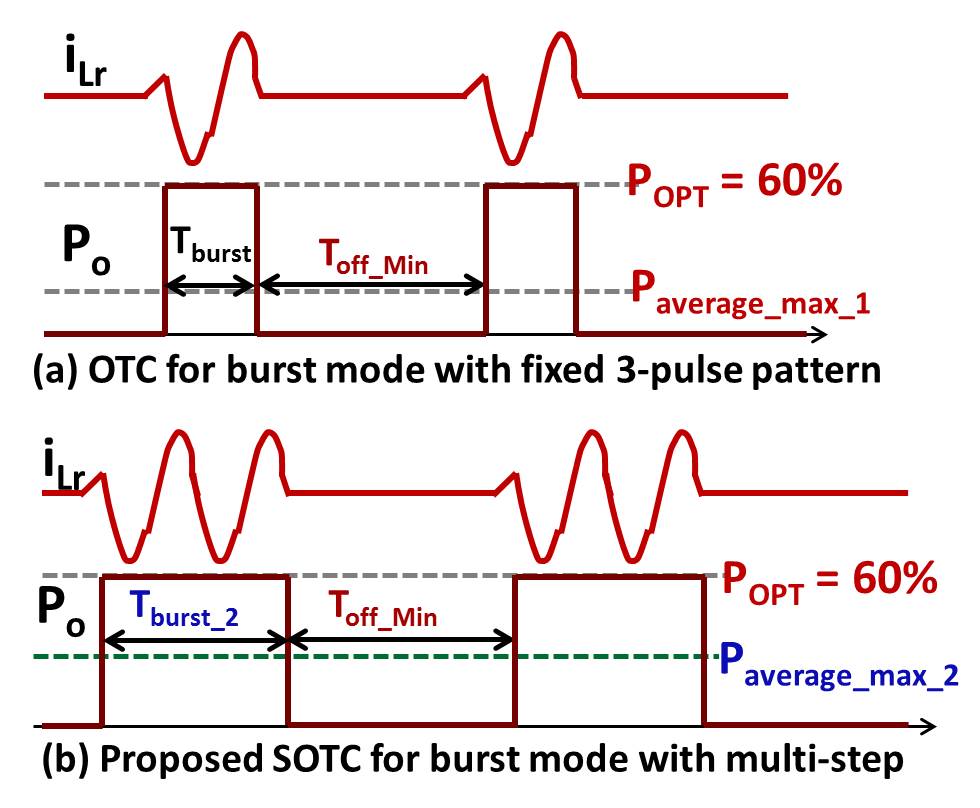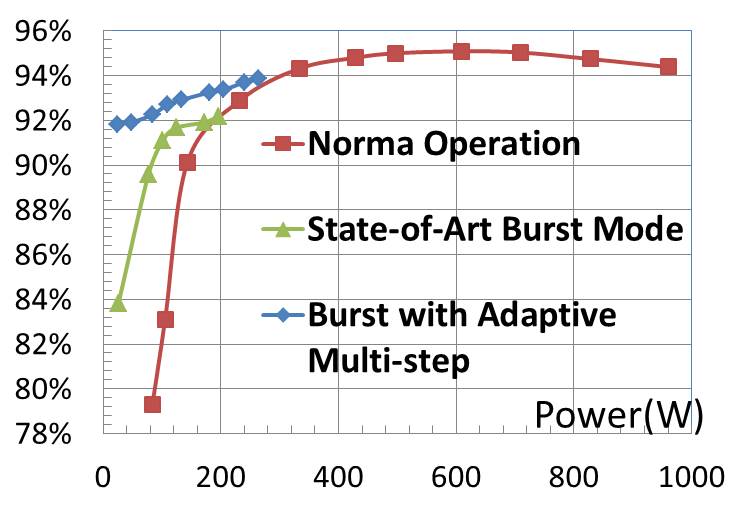LIBRARY
Simplified Optimal Trajectory Control (SOTC) for Burst Mode of High Frequency LLC Resonant Converter

Due to the dynamics of the resonant tank, conventional burst control for the LLC converter is problematic in that the resonant tank can't maintain the efficiency-optimal state trajectory. Based on state-plane analysis, the OTC for burst mode with a fixed 3-pulse pattern can solve this problem. However, when the OTC for burst mode is applied to the high frequency LLC converter with MCU, the burst mode operation range is limited. This is because in burst off-time, the digital controller must leave enough time to blank sensing noise, sample, and update control signal. With minimum off-time Toff_min, the maximum average power delivered to the secondary side is limited, as shown in Fig. 1(a).
To extend the burst operation range for the high frequency LLC converter, SOTC for burst mode with adaptive burst on-power and adaptive multi-step are proposed in this paper. The first strategy is to increase the burst on-power; however, the desired trajectory is not fixed to the efficiency-optimal trajectory. The second strategy is to increase the burst pulses as shown in Fig. 1(b). This strategy works using the following principles: assuming the load increases from an empty load, initially a 3-pulse pattern is applied; when the load increases to the 3-pulse pattern's limit, then a 5-pulse pattern is applied; the same principles are applied going forward.
The SOTC for burst mode with adaptive multi-step is verified on a 500kHz LLC converter controlled by a 60MHz MCU. The efficiency curve is shown in Fig. 2, and light efficiency improvement is shown to be significant compared with conventional burst mode.























































































